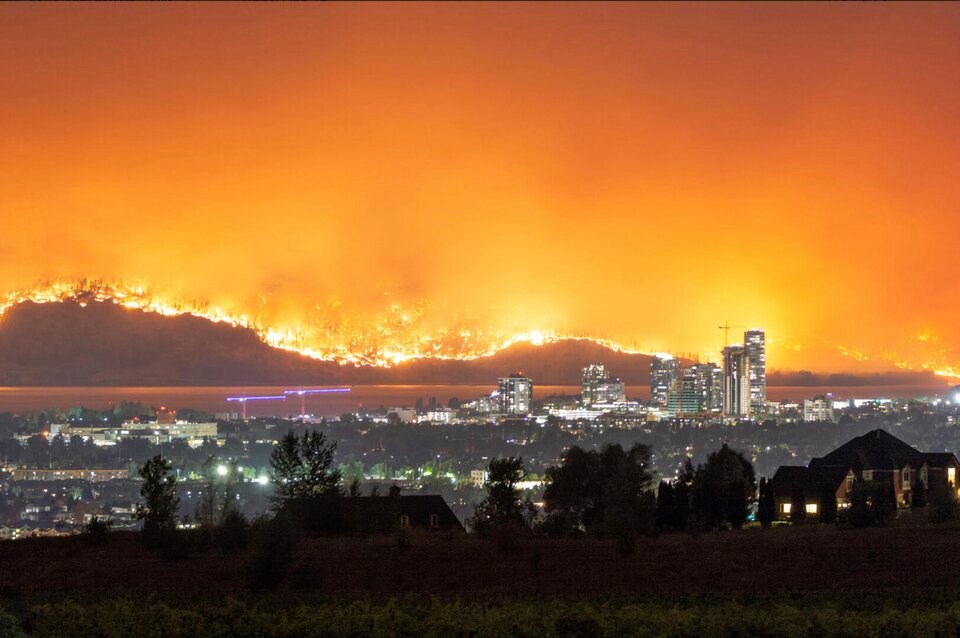National targets to build millions of new homes over the next five years risk putting hundreds of thousands of structures in the path of wildfire and floods, according to a new report.
The resulting surge in damages is forecast to balloon costs by more than $3 billion across Canada, with more than half the destruction occurring in British Columbia.
Published by the Canadian Climate Institute this week, the landmark study combined normally private models projecting wildfire and flood risk with forecasts on where Canadian towns and cities are likely to build new homes.
Co-author Sarah Miller said her team wanted to see what would happen if the country followed through on building the 5.8 million new homes the Canadian Mortgage and Housing Corporation says are necessary to alleviate the housing affordability crisis.
“This problem is already really bad across the country, and we’re looking at potentially building a lot more housing,” said Miller.
By 2030, an estimated 760,000 new Canadian homes could face damage from wildfires and flooding, the report found.
About three per cent of new builds (150,000) could be situated in zones of very high flood hazard. Another four per cent (220,000) could be built in municipalities with significant wildfire risk, it found.
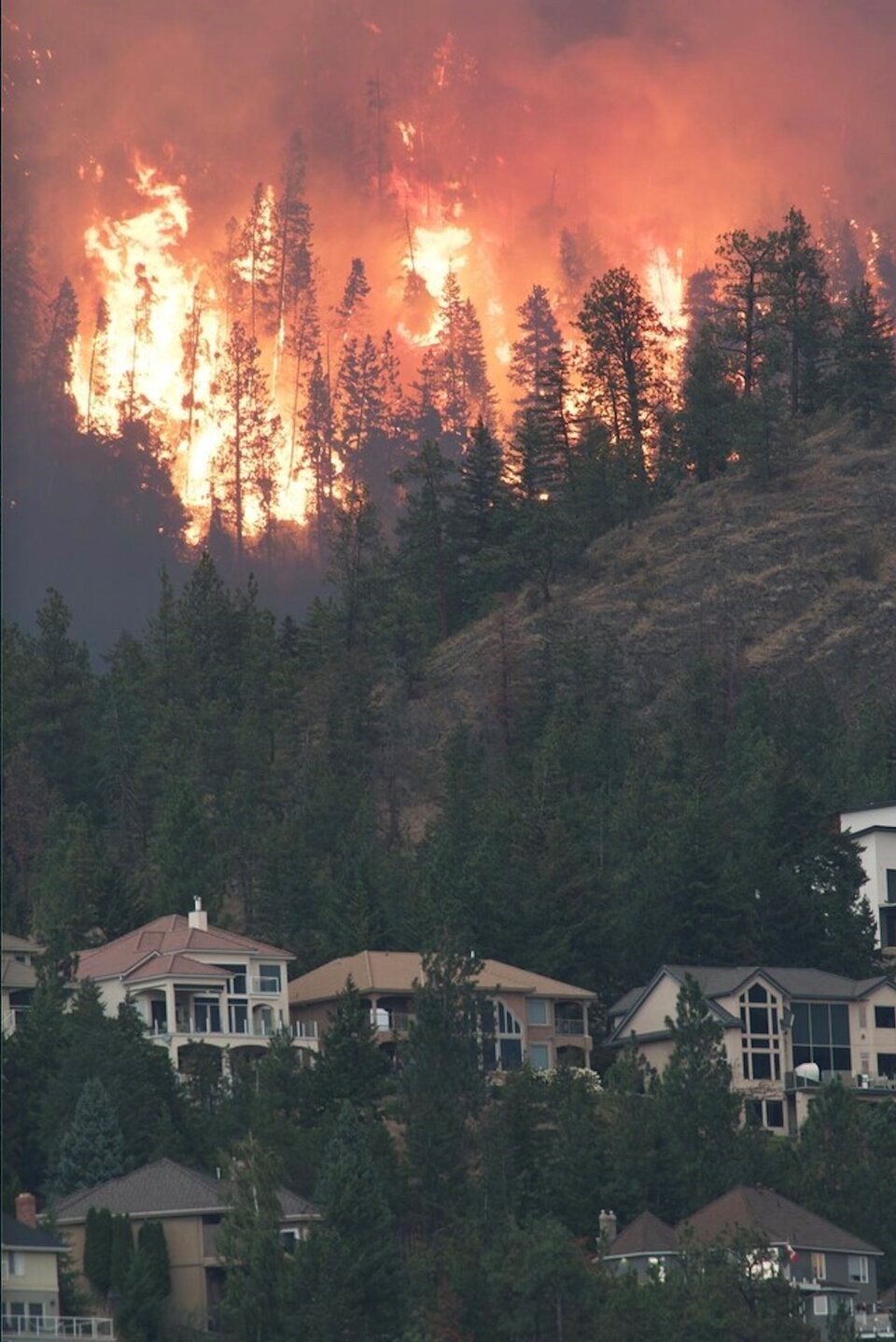
Most of that risk was found to be in B.C. In the worst-case scenario, building new homes in dangerous places could result in the province absorbing 95 per cent of Canada’s increased damages from wildfires and half of the spike in the country’s flood bill.
The financial risk from new housing in flood and wildfire hazard zones could surpass $2.2 billion per year in Canada’s westernmost province. By comparison, the next-highest damages are expected in Manitoba ($360 million), Alberta ($220 million) and Quebec ($214 million).
“Such large and unpredictable disaster costs would put enormous strain on municipal budgets, likely requiring funds to be diverted from other essential public services or leading to unsustainable reliance on provincial and federal assistance,” the authors write.
In an emailed statement, Minister of Emergency Management and Climate Readiness Kelly Greene said her ministry was reviewing and considering the report's recommendations.
As wildfire damages surge, highest risk concentrated in 20 communities
B.C.’s current wildfire risk sits at roughly $400 million a year in damages, but by 2030, new builds could see annual damages spike to $1.5 billion.
“We’re looking at wildfire damages almost tripling,” said Miller, who is based in Victoria. “In the rest of the country, the increases are relatively marginal.”
Confidentiality agreements with insurance companies and private flood modellers prevented Miller and her colleagues from releasing the names of specific towns.
A level of uncertainty at a local level also pushed the group to carry out a risk analysis at a regional level. Still, the numbers offer a striking portrait of potential disaster.
An estimated 92 per cent of potential wildfire-related financial losses will be concentrated in just 20 municipalities across Canada. Of those, 16 are in B.C., with most spanning the Thompson-Okanagan, the Kootenays and the province’s northeast.
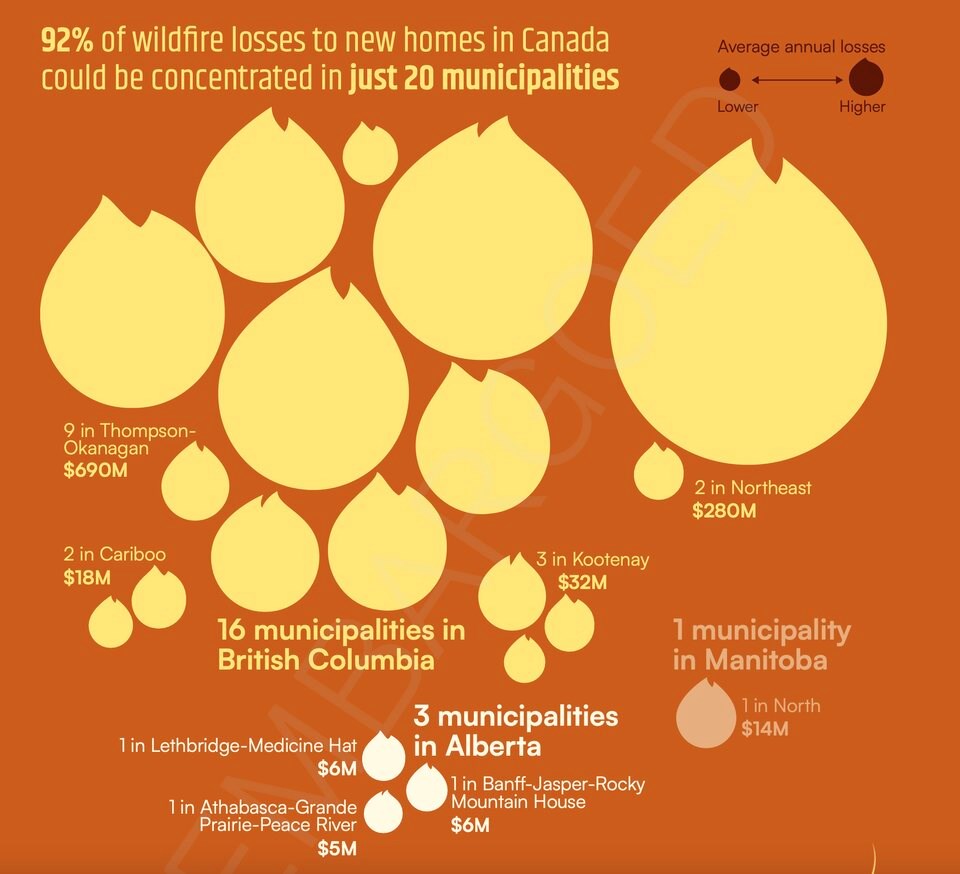
Flooding could cost B.C. over $3 billion a year by 2030
The highest costs from floods, meanwhile, were concentrated in Canada’s urban centres, across southern Quebec and Ontario, Manitoba, Alberta, and B.C., with the latter once again expected to absorb a majority of damages.
In the worst-case scenario, 61,000 new homes in B.C. will fall in the highest flood-hazard zones, double the number of homes in that situation in Ontario.
The province’s outsized exposure to flood risk is even more stark when it comes to the cost of damages, estimated to rise to $1.1 billion by 2030. That’s more than eight times the flood bill forecast for Quebec, the province expected to see the second-highest flood costs.
Together with risk to existing homes, the added flood damage in B.C. could lead to more than $3 billion in annual losses by the end of the decade, more than the combined losses across the rest of Canada.
Most of the new damage is expected to come from inland flooding, though new homes built near the ocean are also expected to present an “acute risk,” the study says.
In the best-case scenario, B.C. is expected to account for 35 per cent of the national spike in coastal flooding costs; in the worst case, B.C. absorbs 85 per cent of those costs.

Miller said there is significant uncertainty around the costs of flooding, because local jurisdictions across the country have been notoriously bad at reporting the quality of flood defences.
In the best-case scenario, there are top-quality flood defences that are up-to-date and working properly. In a worst-case scenario, flood defences are failing or not working as they are supposed to.
The reality is likely to lie somewhere in the middle, though events like the 2021 atmospheric river — which knocked out roads and bridges, breached dikes in several B.C. communities, and caused billions of dollars in damage — raise concerns that other flood defences aren’t up to standard, said Miller.
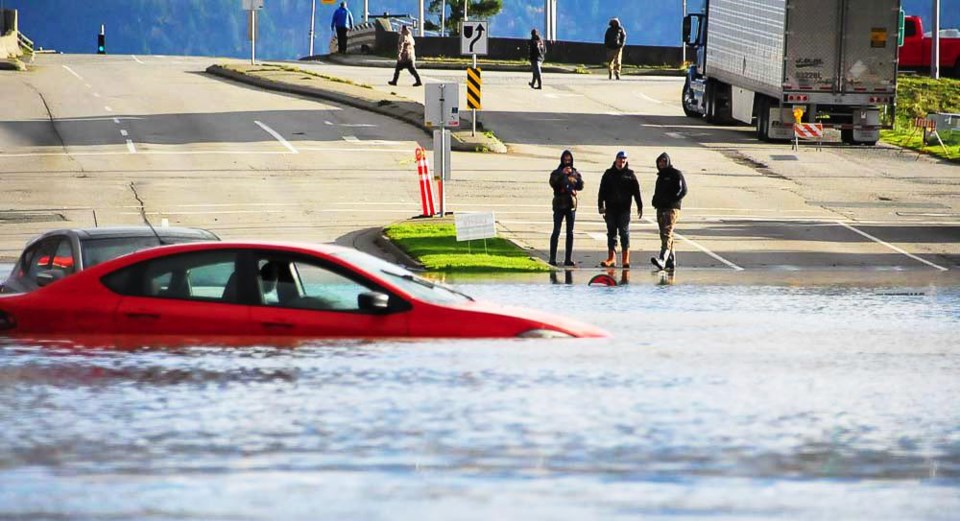
In 2016, the Fraser Basin Council reported two-thirds of the assessed dikes in the Lower Mainland scored as poor to fair, while 18 per cent were classified as unacceptable to poor.
“Few of the dike segments assessed meet current provincial standards, and no dikes fully meet provincial standards,” says the report.
Five years later, and just months before catastrophic flooding hit much of B.C. in 2021, the council released a commissioned report warning that there are “no guidelines” and “limited information” when it comes to channel maintenance. And when it came to dikes, the report found “many known gaps” remain.
“The current model for flood risk governance in B.C. is broken,” it concluded.
Dikes would later fail across several B.C. communities, including Abbotsford, Princeton and Merritt.
The latest report lists the Lower Mainland, Thompson-Okanagan and the southern end of Vancouver Island among the top-10 riskiest regions in Canada for flood damage.
More transparency and better land-use planning
The wildfire and flood risk data used for the report was almost all privately held, either by insurance companies or private firms. Government and the public rarely have access to that information, in what Miller described as anything but a level playing field.
The report calls on local and regional governments to prioritize wildlife and flood-risk modelling, and for provincial regulators to mandate disclosure of that data to the public so people know the risk they face when buying or renting a home.
“It’s extremely important for people in communities to know the level of their risk,” Miller said. “People need to push their governments to do this work. It’s feasible to do. It just takes investment and it takes prioritization.”
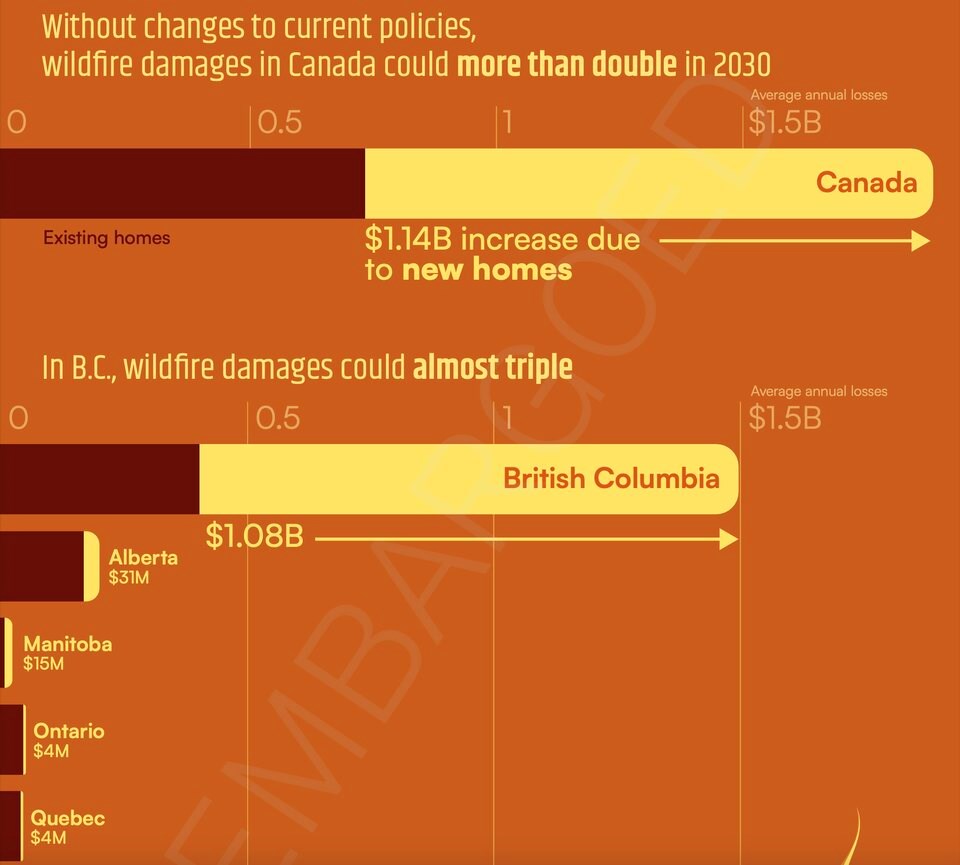
Avoiding the costs of disaster in new homes requires action from all levels of government, the study found.
Part of the outsized risk B.C. is facing is due to its vast forests, mountains and coastline that can restrict where communities can build, said Miller. But the projected losses also reflect that B.C. has weaker land-use policy than some other provinces, the report found.
Unlike Ontario or Quebec, B.C. only offers guidelines on where to build, and does not restrict municipalities from building homes in high-hazard areas, said Miller.
Tamsin Mills, a former planner with the District of Squamish and the City of Vancouver who wasn’t involved in the report, said B.C. does have some land-use regulations to direct development away from the highest-hazard areas and manage risk in hazard-prone areas.
As an example, she pointed to flood-management bylaws and FireSmart principles contained in municipal wildfire development permit areas.
To improve those measures, Mills said the province would first need to create a standard for risk tolerance — such as risk to life — that would guide land-use planning.
Mills added that B.C. would also need a standard approach that incorporates the influence of climate change on future risk. Currently, each local government or First Nation is developing its own approach separately, she said.
However B.C.’s local and provincial government choose to respond to the threats in the report, the good news is that most of the projected losses are expected to occur in only a small number of new builds. The study found six per cent of new homes make up 90 per cent of B.C.’s projected losses.
“Even in these riskiest areas, there is still room to build elsewhere within these communities,” Miller said. “The most affordable home is the one you don’t need to keep building.”
